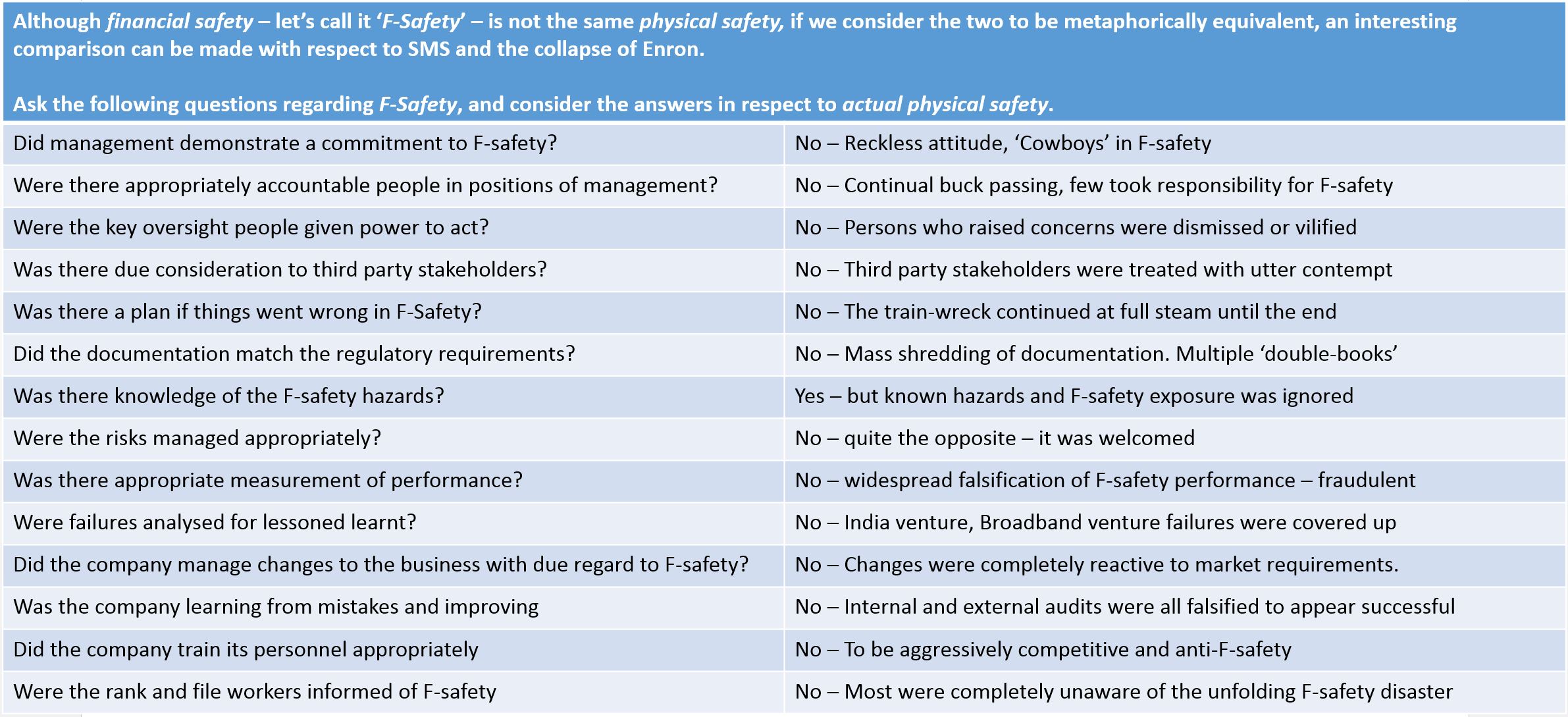The collapse of Enron
 Enron was a company so significant and complex, it was considered too big to fail. When it did, over 20000 employees lost their livelihoods and many more their financial future.
Enron was a company so significant and complex, it was considered too big to fail. When it did, over 20000 employees lost their livelihoods and many more their financial future.The company was also addicted to risk and missed all the warning signs, at all levels that events were going off the rails.
The management and wider workforce practices defied the laws of financial safe sense – in many cases were also illegal. The checks and balances associated with a complex system were ignored The defences and regulation that should have protected it, were consistently breached.
INSERT ‘SMARTEST GUYS IN THE ROOM’ LINK

For consideration;
- Management culture was profit at all costs
- There was a predatory culture fostered in the workforce
- Leadership had ‘loose moral compasses’
- There was an almost ‘pathological’ loathing of regulation
- No consideration for what could go wrong
- Contempt for third party stakeholders
- Widespread documentation shredding due criminal nature
- Shameless ‘passing of the buck’ attitude
- Senior management denied any responsibility for the collapse
- Risks were known and ignored – ‘Addicted to risk’ (Jeff Skilling)
- Performance measurement falsified
- Failures were hidden and made to be successes – no lessons learnt
- Massive expansion without planning or appropriate consultation
- Falsified internal and external audits
- Those who raise concerns were dismissed or vilified
- Training focused on competitive and predatory market forces
- Communication was highly sanitised to meet market expectation. All ‘good news’ stories
- Rank and file staff were mostly blindsided by the collapse – few believed it would happen
The outcome for Enron was avoidable. It had sound business foundation and a large market in which to expand. But by ignoring or breaching the defences that should have been protection – it collapsed spectacularly. Perhaps not disimilar to the shock of a major physical disaster such as the two previous examples.
The questions asked in the table above reflect the elements required for SMS in aviation. While the industry may be different, the principles remain the same. The basic components of Policy and planning, risk management, (F-)safety assurance and (F-)safety promotion are the pillars that protect against failure. They provide the means to regulate, predict, analyse and defend against human error, negligence, folly or just bad luck



